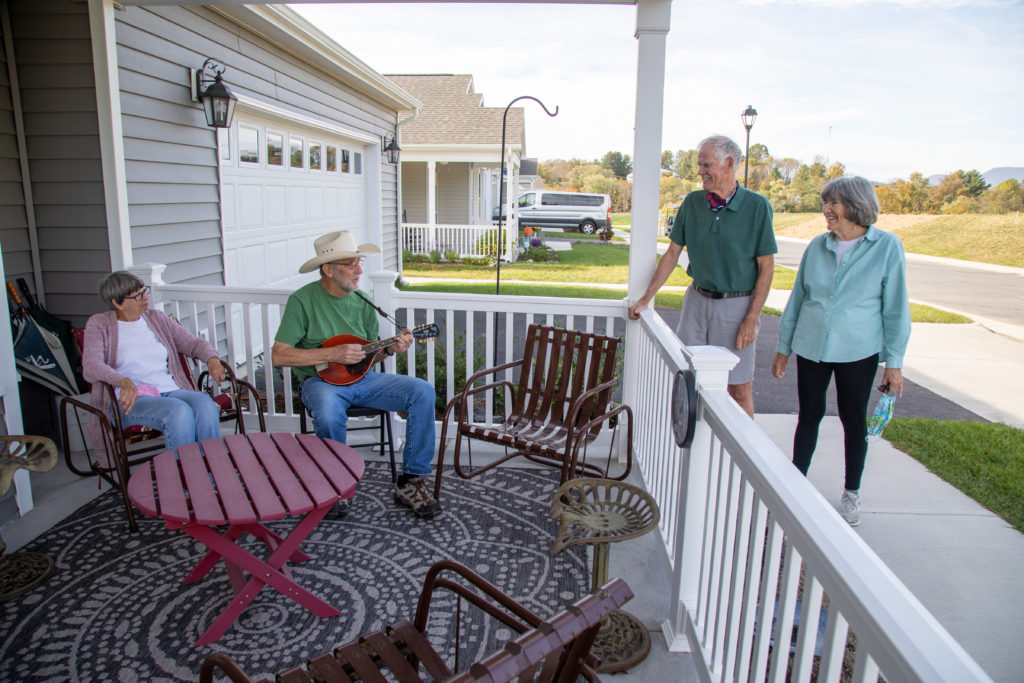June 18, 2021 —Older Americans often spend a substantial amount of time and energy during their working years focused on affording retirement. While it is prudent to prepare financially, it’s every bit as critical to prepare emotionally and socially.
Those who stalwartly declare that they will be independent and self-supporting may overlook the importance of community and connection when it comes to their health and wellbeing. While they may think that remaining in their home and ‘fending for themselves’ is a noble undertaking, they miss out on the mental health aspect that many experts say is far more important.
The family and community of structure of the past kept generations together. Today, many families are scattered, and as communities change, older adults may find that their neighborhood doesn’t fit them anymore. As they lose family or friends, they may withdraw and find themselves isolated from others.
Losing interaction with others, even if it’s a brief chat with the grocery clerk or seeing the mail carrier can lead to further feelings of isolation and loneliness. According to the Administration on Aging, even 15 minutes of interaction a day — in person or virtual — can mitigate the effects of loneliness on seniors.
Socialization Keeps Us Healthy
Those feeling isolated are more prone to both physical and mental risks including dementia, depression, suicide risk, and reduced self-care. An isolated senior may put off important doctor visit or curtail activities that kept them active. Often proper nutrition suffers as well if food prep or shopping becomes more difficult.
Recently with the pandemic and social distancing, senior Americans were at even greater risk of isolation. A University of Washington study of social services and health care organizations revealed providers expect the effects of isolation in 2020 to persist well after restrictions have been lifted.

New Attitudes on Aging in Place
Many may have an established a belief that downsizing and moving to a retirement community is only for someone who have given up and is waiting to die.
However, a look at the retirement communities of today, formerly known as a continuing care retirement community (CCRC) or Life Plan Community, you’ll see that this phase of life can be an active, engaging way to age in place.
Aging in Place in the Right Community
Whether it’s exploring a new vocation or feeling like you’re on vacation, a life plan community can be the ideal environment to age in place actively and vitally. Created with an emphasis on independent living in homes designed for ease of mobility and accessibility, these campus-like communities offer amenities such as swimming pools, golf courses, fitness centers, and community centers to accommodate all interests and activity levels.
Many communities, such as Kendal at Lexington, are resident-driven communities, further engaging residents as they take on leadership roles in developing programs, activities, and policies in concert with the community’s administration.
While participation isn’t mandatory, the wide variety of options means there’s likely something for everyone to enjoy at their pace. Community-wide communication and the neighborhood-like atmosphere fosters socialization and at KaLex, even during social distancing, residents and staff creatively interacted whether it was virtually, or outdoors with proper precautions.
Kendal’s model also provides residents with a Lifecare plan that includes plans for any increased health care needs as they age. This allows community members to truly age in place, staying on the Kendal campus, although moving to either assisted living or skilled care, if necessary.
Moving to a Life Plan community can be the ideal choice for aging in place. It can also prompt a lot of questions. Contact us to find out more or begin the application process. We’re happy to help you find your ideal place.